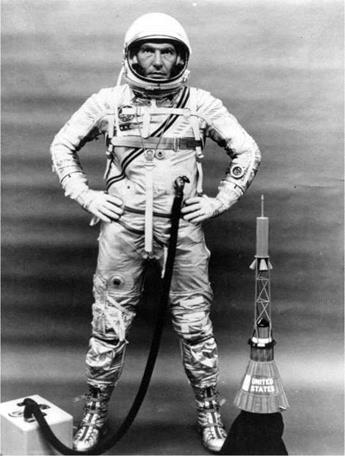MERCURY ATLAS 8
 1962 beta delta 1 3 October 1962
1962 beta delta 1 3 October 1962
Pad 14, Cape Canaveral, Florida 3 October 1962
756.35 km northeast of Midway Island, Pacific Ocean Atlas 113D; spacecraft serial number SC-16 9 hrs 13 min 11 sec Sigma 7
Six-orbit mission
Flight Crew
SCHIRRA, Walter Marty Jr., 39, USN, pilot
Flight Log
Carpenter’s science-packed flight plan was being changed until almost launch day, so it was not surprising that he had trouble in orbit. One of his main critics was MA8 pilot Wally Schirra, who was extremely pleased with the smooth running of his own six-orbit mission, which he had made a modest engineering test flight with the minimum of experiments and manoeuvring. Indeed, his flight plan had been cast in stone on 8 August. What was surprising was the conservatism of mission planners, who decided to increase orbital flight experience by just 50 per cent, with a first-time landing in the Pacific Ocean, just short of a full six orbits.
MA8 could have been the first aborted launch, for just ten seconds after leaving the pad at 07: 15 hrs local time, Atlas 113D developed an alarming clockwise roll rate just 20 per cent short of an abort. The launch was the first to be shown on British television on the same day, three hours later, thanks to the Telstar communications satellite. It was also watched from the Cape by nine new NASA astronauts, who had been selected the previous month. Schirra had been in his capsule, with the engineering name Sigma 7, since 04: 14 hrs, and reached the highest Mercury orbit of 282 km (175 miles) and a speed of 28,256 kph (17,558 mph).
There had been concern that Schirra would be affected by the radiation belt created the previous July by the horrendous US upper-atmosphere nuclear test, Project Dominic. An overheating spacesuit almost forced an early return after just one orbit, but fortunately spacesuits were Schirra’s speciality. He deployed the MA7- type tethered multicoloured balloon, this time with success, and spent at least one orbit letting the spacecraft drift as it pleased. The retros were fired at T + 8 hours 56 minutes 22 seconds and Sigma 7 splashed down in the Pacific Ocean 756.35 km (470 miles) northeast of Midway Island, and just 7.2 km (4 miles) from its target, close to the recovery ship, USS Kearsage. Schirra’s mission lasted 9 hours 13 minutes
|
Mercury Atlas 8 pilot Wally Schirra |
11 seconds. He stayed with the ship until winched aboard the Kearsage. Media interest in the flight was minimal.
Milestones
9th manned space flight 5th US manned space flight 5th Mercury manned flight











